- HubPages»
- Food and Cooking»
- World Cuisines»
- East Asian Cuisine
Korean Food
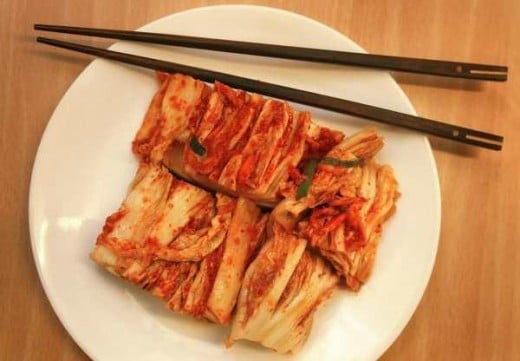
When I first moved to Korea, I initially wondered what I had gone and gotten myself into, in terms of the local cuisine. It seemed like everything was either too spicy, too fishy, or a combination there of, and I have to admit that it wasn't long before I despaired of ever finding a genuine appreciation for this country's cuisine.
A year later, my tune has changed, and I'm here to tell you all about the wonderful foods that Korea has to offer. They may be an acquired taste, but they are tastes that will stick with you for a long time.
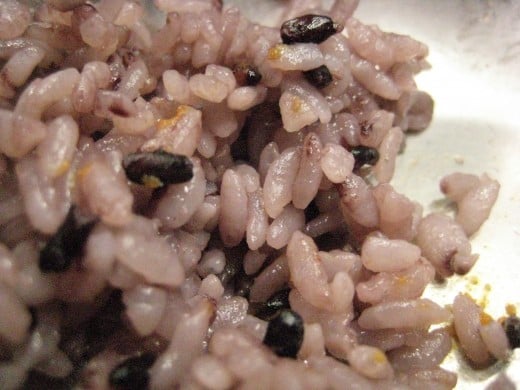
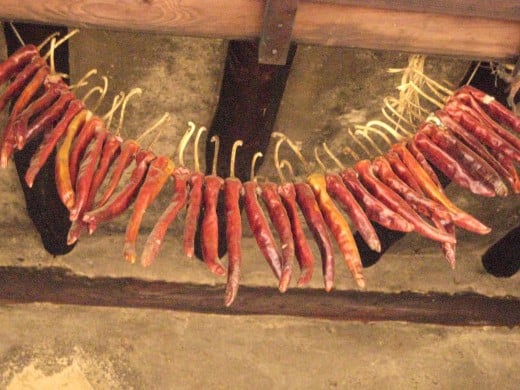
The cabbage that we ravage with the chili paste taste...
The first two main food groups of Korea, are Kimchi and rice. These are closely followed by red pepper paste. Koreans eat of these three food groups at least once in just about every meal, even for breakfast! While eating Kimchi and rice for breakfast is not a taste I have yet acquired, I do enjoy it immensely with my other meals of the day.
Kimchi is a form of pickled vegetable, that is a staple in the Korean diet. There are many different types, the most popular of which being Baechu Kimchi, or Kimchi made from Chinese cabbage. Kimchi varies with the seasons, with many different varieties of 'winter' and 'summer' kimchi. It is a delicious staple of the Korean diet, and has been listed among the top five of the world's healthiest foods.
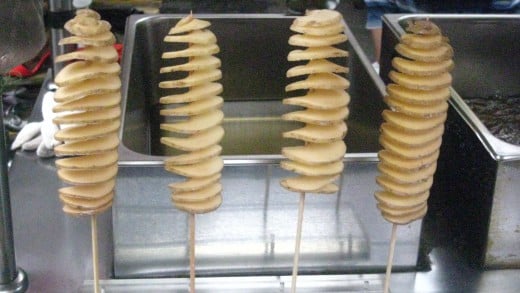
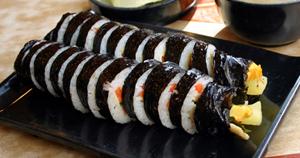
When you are out and about, exploring Korea, your going to get hungry, and Korea is a wonderful place to take advantage of street vendors. Food is cheap, delicious, and plentiful, especially for those who are willing to take a risk. You can get everything from Waffles and red bean filled fish to snack on, to simple meals where Koreans huddle around a cart as they wolf down their food, still piping hot. My personal favourite street food are these spiral potatoes on a stick, that after having spent a few minutes in a deep fryer, and being doused with a cheesy spice are absolutely to die for. Cheep and delicious, just the way I like it.
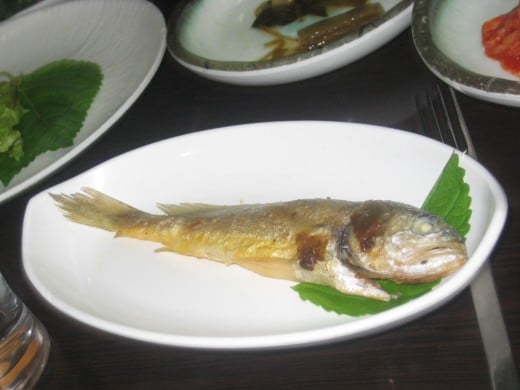
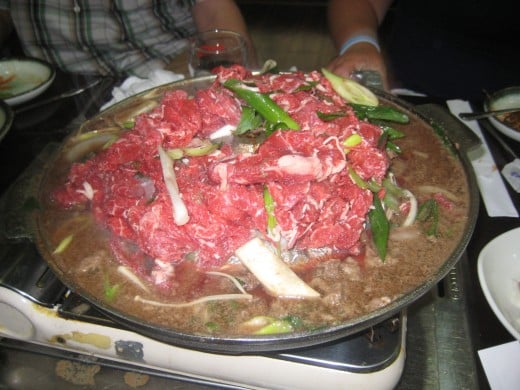
One thing, that I think I'll never really get used to in Korean/World cuisine, is food that looks at me while I am biting into it. Call me uncultured, or call me what ever you like, but this is one thing that I don't think I'll ever adjust to. Koreans however, have embraced this particular way of eating fish with a gusto that I have never seen elsewhere. Although the fist pictured to the right is quite large, these whole fist are quite common as side dishes here in Korea, where they are eaten whole. Korea is also a great place to come if you'd like to eat octopus that is still moving, or -- on a mostly unrelated note -- dog meat. I'll not delve into either of those in this particular hub, but consider yourself warned.
This somewhat unappealing to the average western palate dish, I have chosen to pair with the most western friendly dish in town, to provide a little contrast. This dish, called Bulgogi, is in fact so western friendly, that it's a stereotypical dish of tourists, who naturally love it due to its sweet beefy goodness, and last of overt fishy flavour or burn-off-your-mouth spiciness. It's a great dish for your first Korean food experience, and is tame enough even for the majority of the most sensitive western palates.
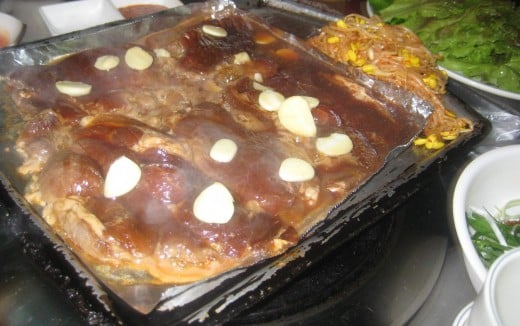
If Bulgogi is astereotypical dish of tourists, then Galbi is the stereotypical tourist dish to top all others. Its no secret that we westerners love our meat, and that is the major component of both of these dishes. We are said to eat so much meat in fact, that many Koreans and other Asians claimthat we have a particular scent because of it. Scent or no scent, meat -- and specifically galbi in this case -- is delicious, and I personally have no intention of depriving myself of it's deliciousness.
Galbi, in English also known as barbecue Korean short ribs, is a dish of marinated beef or pork barbecued in the center of your table and then eaten wrapped in lettuce. It is often served with rice, soup, bean sprouts, kimchi and other side dishes, and while once considered a delicacy reserved only Korea's elite, is now available throughout Korea. For those of you not fortunate enough to come to Korea in person, Galbi is also one of the most widely available Korean foods in the west, and is available at many Korean restaurants in larger centres.
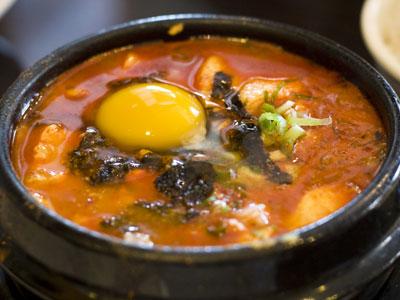
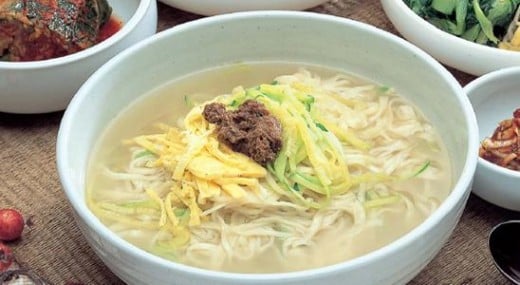
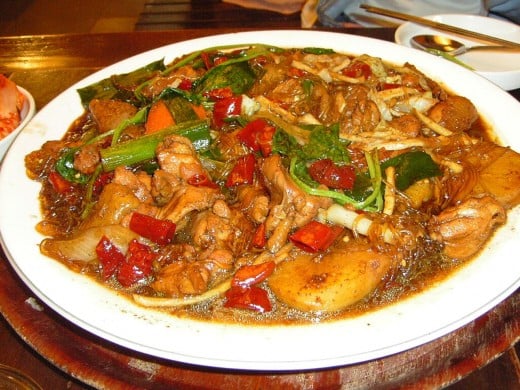
While Korea is the most famous in the west for its delicious marinated beef and pork dishes, Koreans themselves don't actually eat Bulgogi or Galbi all that often. Other foods are eaten much more regularly here, among them the many soups and stews that make up a large staple in the Korean diet.
Two of the most famous of these soups and stews are Soondubu chigae, a spicy stew many with silken tofu, and Kalguksu a traditional Korean soup made with hand cut flour noodles. Soup is a very popular dish here, and is often served piping hot in a stone bowl to retain the heat. Somehow, many Koreans start shoveling it in before it has even had the chance to stop bubbling. I'm not exactly sure how they do it, its not a technique to be used by the faint of heart, or the sensitive of mouth.
While talking about soups, stews and noodles it is of course important to remember ramen, the ultimate Korean snack food. Korean people eat ramen at any and every point during the day, in large part because its just so cheap and quick. It comes in a variety of flavours, and is just so convenient that it can be hard to pass up.
The last stew on my list, is my personal favourite Jjimdalk, a spicy chicken stew, which in my opinion is the best food to eat in Korea. It is quite spicy, and was definitely an acquired taste of mine due to that fact, but its delicious, and something I'm really going to miss when I leave this place.
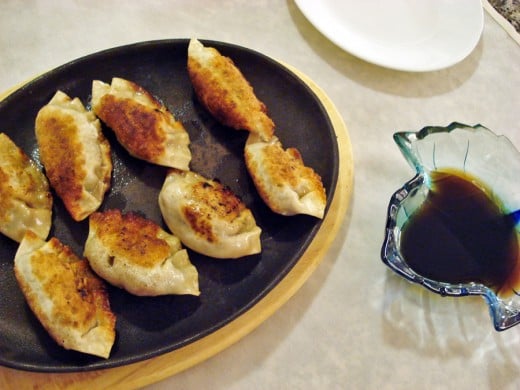
One of my absolute favourite Korean snack foods, often served as an appetizer, is Mandu, or Korean dumplings. These can be boiled, fried (as pictured) or steamed, and the stuffings are numerous and can vary region to region and season to season. They are eaten by themselves, dipped in soy sauce, or cooked in soups or rameon.
According to Wikipedia:
In the Korean film Oldboy, the protagonist Oh Dae-Su is fed a steady diet of gunmandu, the food that he hates the most, while he is imprisoned. After he is released, he visits various restaurants serving gunmandu to determine where he was held captive.
Mandu are very difficult to make by hand, and hand made mandu are considered more delicious that those produced for mass markets.
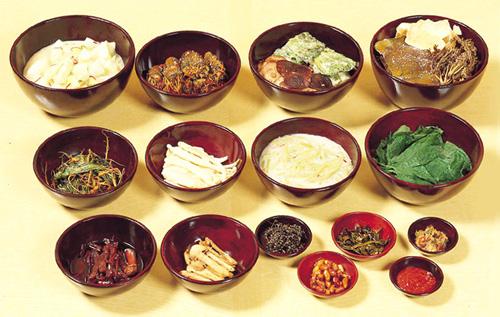
The last important thing to mention about Korean food, is the plethora of side dishes, or banchan that come with each meal. Each meal comes with at least half a dozen side dishes ranging from kimchi, to whole miniature fishes. Some are spicy, some are sweet, and unfortunately a lot of them are wasted. To prevent waste and keep costs low, many lower-priced restaurants reserve these side dishes if they are not eaten by the previous guests.
Korean food is for the most part, delicious, and quite healthy. Although an acquired taste for many western palates, Korean food can and will grow on you, if you only give it a fighting chance.








